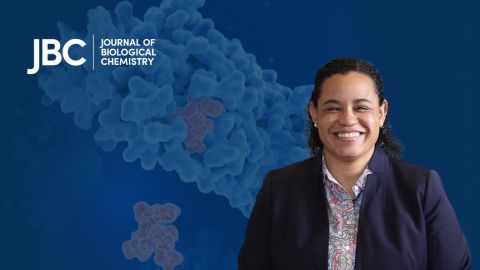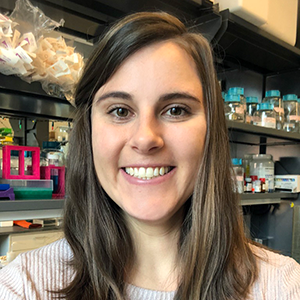JLR: How a single-cell marine organism makes fatty acids
Omega-3 fatty acids have been heralded as crucial to our health and well-being. Humans and other mammals cannot synthesize these fatty acids on their own. Organisms capable of synthesizing these important molecules, such as a single-celled marine organism called Thraustochytrium, are of interest for their use as dietary supplements. In a recent paper published in the Journal of Lipid Research, Dauenpen Meesapyodsuk and Xiao Qiu of the University of Saskatchewan in Canada report the pathway that is responsible for the synthesis of these fatty acids in Thraustochytrium.

Omega-3 fatty acids, which can be categorized as very long chain polyunsaturated fatty acids, known as VLCPUFAs, are important components of cell membranes. They also form products that are involved in blood circulation, metabolism, neurotransmission and inflammation. Mammals can obtain omega-3 fatty acids from foods such as salmon and walnuts or from dietary supplements.
Thraustochytrium has been used as a commercial source for these healthy fatty acids. Scientists knew that these organisms produced large quantities of VLCPUFAs but didn’t know exactly how they did it.
Organisms are thought to synthesize VLCPUFAs through two possible pathways. The first is the aerobic pathway. It requires oxygen and involves lengthening and adding double bonds to existing fatty acid intermediates. The second is the anaerobic pathway. It does not require oxygen and uses specific enzymes to build VLCPUFAs directly from small precursor molecules, such as acetate.
Qiu’s laboratory previously had demonstrated the presence of an enzyme involved in the aerobic pathway in a species of Thraustochytrium called Thraustochytrium sp. 26185. They also recently had observed the coexistence of the anaerobic pathway in the same organism. “This prompted us to investigate the function and importance of the two pathways for the biosynthesis of VLCPUFAs in the species,” explains Qiu.
Qiu and Meesapyodsuk investigated the pathways by analyzing the important genes of each in E. coli or yeast, which essentially served as a blank slate to isolate the Thraustochytrium genes and examine their function. They used gas chromatography coupled to mass spectrometry to analyze fatty acid structure; they used feeding experiments to track VLCPUFA formation.
The data “show that the anaerobic pathway is responsible for the VLCPUFA biosynthesis in the Thraustochytrium,” states Qiu. Thraustochytrium uses enzymes to build the VLCPUFAs sequentially from a small base molecule instead of making modifications to existing PUFAs.
What about the aerobic synthesis pathway that also was shown to be present in the same species? “Although both aerobic and anaerobic pathways for biosynthesis coexist in the Thraustochytrium, the aerobic pathway is not complete,” explains Qiu. This pathway has several enzymes that are ineffective. This makes it incapable of generating VLCPUFAs.
There is a simple explanation for why both pathways may exist in a species — evolution. “It is believed that the aerobic pathway is a progenitor system, while the anaerobic pathway is later acquired by the species,” explains Qiu. The anaerobic pathway is more efficient at producing VLCPUFAs. As time went on, components of the less effective aerobic pathway could have become unnecessary and been lost.
VLCPUFAs are important for our health, so it is important to understand how they are produced in the organisms we rely on to supplement our diets. This knowledge could in turn help engineer similar systems that produce VLCPUFAs. Qiu says, “Metabolic engineering of VLCPUFAs in heterologous systems (could) provide an alternative source of these fatty acids for human and animal consumption.”
Enjoy reading ASBMB Today?
Become a member to receive the print edition four times a year and the digital edition monthly.
Learn moreGet the latest from ASBMB Today
Enter your email address, and we’ll send you a weekly email with recent articles, interviews and more.
Latest in Science
Science highlights or most popular articles

Innovative platform empowers scientists to transform venoms into therapeutics
Scientists combine phage display and a “metavenome” library to discover new drugs that bind clinically relevant human cell receptors. Read about this recent Molecular & Cellular Proteomics paper.

Meet Shannon Reilly
The JLR junior associate editor discusses the role of adipocytes in obesity at Weill Cornell Medical School.

Meet Donita Brady
Donita Brady is an associate professor of cancer biology and an associate editor of the Journal of Biological Chemistry, who studies metalloallostery in cancer.

Glyco get-together exploring health and disease
Meet the co-chairs of the 2025 ASBMB meeting on O-GlcNAcylation to be held July 10–13, 2025, in Durham, North Carolina. Learn about the latest in the field and meet families affected by diseases associated with this pathway.

Targeting toxins to treat whooping cough
Scientists find that liver protein inhibits of pertussis toxin, offering a potential new treatment for bacterial respiratory disease. Read more about this recent study from the Journal of Biological Chemistry.

Elusive zebrafish enzyme in lipid secretion
Scientists discover that triacylglycerol synthesis enzyme drives lipoproteins secretion rather than lipid droplet storage. Read more about this recent study from the Journal of Biological Chemistry.

